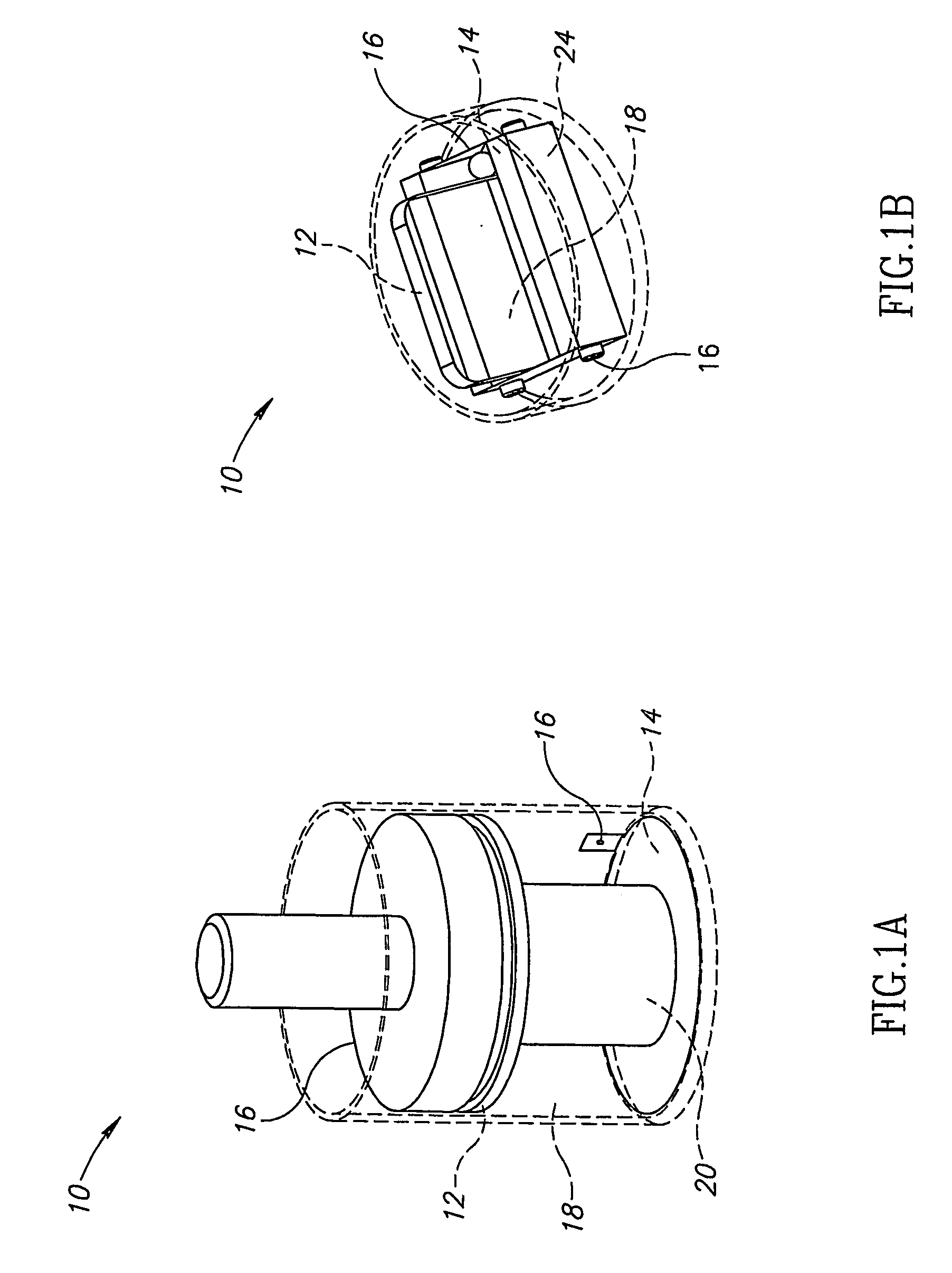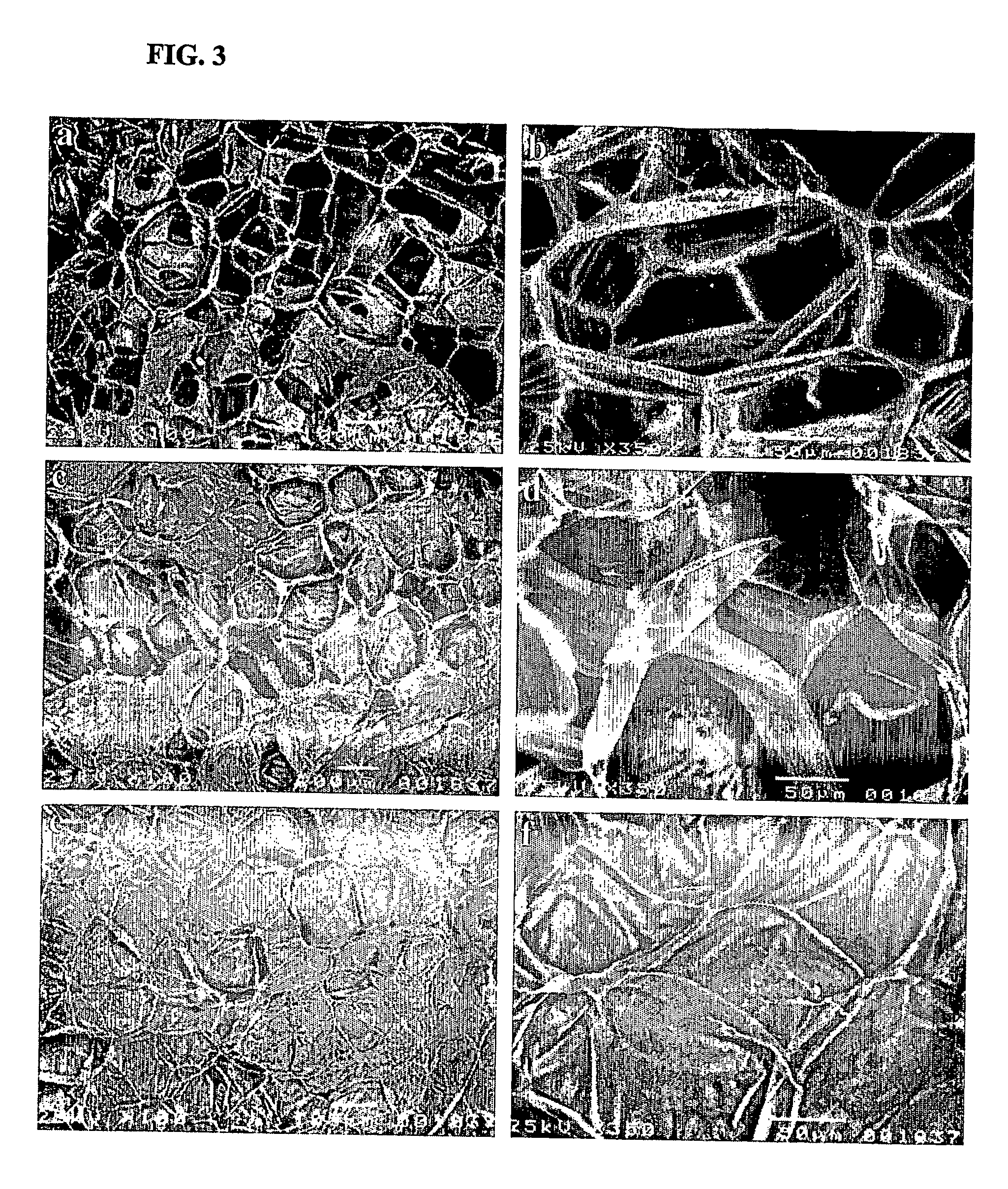System and method for treating biological tissue usiing curret electrical field
a biological tissue and electrical field technology, applied in the field of biological tissue usii, can solve the problems of lack of availability, high cost of techniques and systems, and inability to treat biological tissue, so as to reduce the damage to obtained substances, delay or arrest, and reduce the browning reaction of tissue.
- Summary
- Abstract
- Description
- Claims
- Application Information
AI Technical Summary
Benefits of technology
Problems solved by technology
Method used
Image
Examples
example 1
Electrical Extraction Apparatus
[0097] A custom-made apparatus was built to permit electrical shrinkage of the cylindrical samples in liquid medium (FIG. 5). A few cells of similar design in different sizes were produced to permit inclusion of different-sized specimens and fluid volumes into the apparatus. The samples were sandwiched between a pair of platinum electrodes (Holland Moran LTD., Yehud, Israel) and the space was filled with distilled water. By changing the position of the electrode we could control its distance from the specimen. A DC voltage ranging from 0 to 40 V was applied across the electrodes by a DC power supply (Advice Electronics Ltd., Rosh Ha-ayen, Israel) at electrical field strength of 40 V / cm. The use of relatively low electrical field strength is desirable to minimize the absorption energy of the treated systems, and to avoid its transformation into heat.
example 2
Extraction of Betalains from Red Beetroot
[0098] Betalain pigments extracted from red beetroot (Beta vulgaris) provide a natural alternative to synthetic dyes. They are derivates of betalamic acid and can be classified into two groups: the red-violet betacyanins and the yellow betaxanthins (Kujala et al., 2000, J. Agric. Food Chem., 48, 5338-5342). These water-soluble pigments are normally present at high concentrations in the vacuole of the vegetable, on the order of 1% of the total solids (Timberlake, 1989). They have been successfully used in commercial food coloring operations for a number of years (Mariassyova et al., 1999, Agri-Food Quality II: quality management of fruits and vegetables—from field to table, 314-315. Royal Society of Chemistry; Cambridge, UK). Red beetroot concentrate is universally permitted as a food ingredient, termed beetroot red (Kujala et al., 2000), although its addition to food adversely affects flavor (Francis, 1981). The pigment content in roots is f...
example 3
Extraction of Minerals from Cucumis sativus
[0110] The mineral composition of C. sativus cotyledons (untreated and electrically contracted) and of the solutions in which they were immersed, were examined. Sample batches of the leaves were digested in 5-ml volumes of nitric acid, using an MLS 1200 mega microwave digestion unit. The samples were exposed for 10 min to 500 W, and for another 10 min to 580 W of microwave radiation. The volume was brought up to 15 ml with deionized water. The solutions were diluted 1:10 with deionized water. Analyses were conducted on portions of these solutions, versus multi-element standards. All elements were determined in the tested solutions by inductively coupled plasma atomic emission spectrometry. The mineral composition of C. sativus cotyledons (untreated and electrically contracted by 10 V for 1 min) and of the solutions in which they were immersed, were examined. Higher contents of potassium, sodium, calcium and sulfur were observed as compared...
PUM
| Property | Measurement | Unit |
|---|---|---|
| temperature | aaaaa | aaaaa |
| temperature | aaaaa | aaaaa |
| weight | aaaaa | aaaaa |
Abstract
Description
Claims
Application Information
 Login to View More
Login to View More - R&D
- Intellectual Property
- Life Sciences
- Materials
- Tech Scout
- Unparalleled Data Quality
- Higher Quality Content
- 60% Fewer Hallucinations
Browse by: Latest US Patents, China's latest patents, Technical Efficacy Thesaurus, Application Domain, Technology Topic, Popular Technical Reports.
© 2025 PatSnap. All rights reserved.Legal|Privacy policy|Modern Slavery Act Transparency Statement|Sitemap|About US| Contact US: help@patsnap.com



